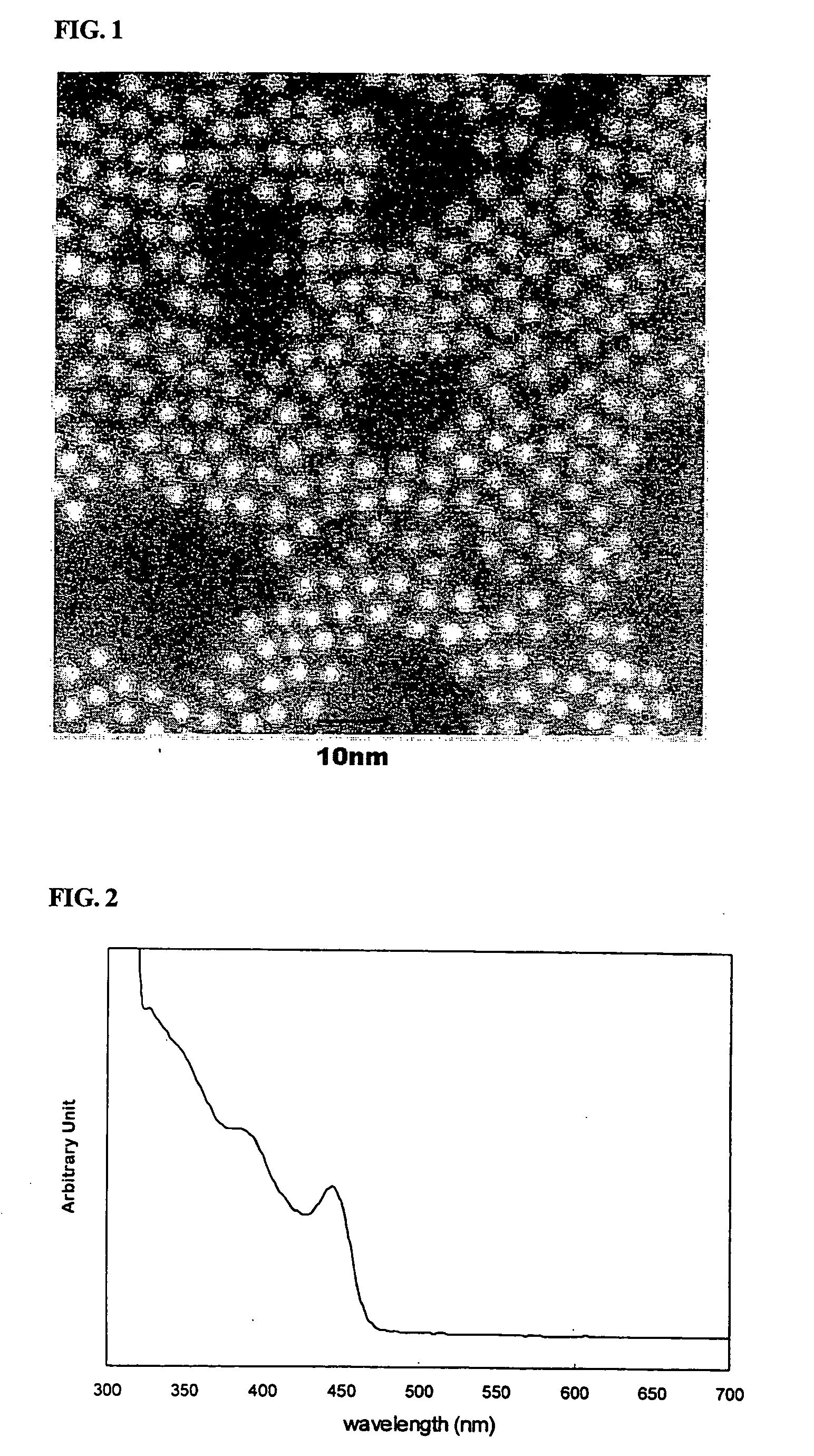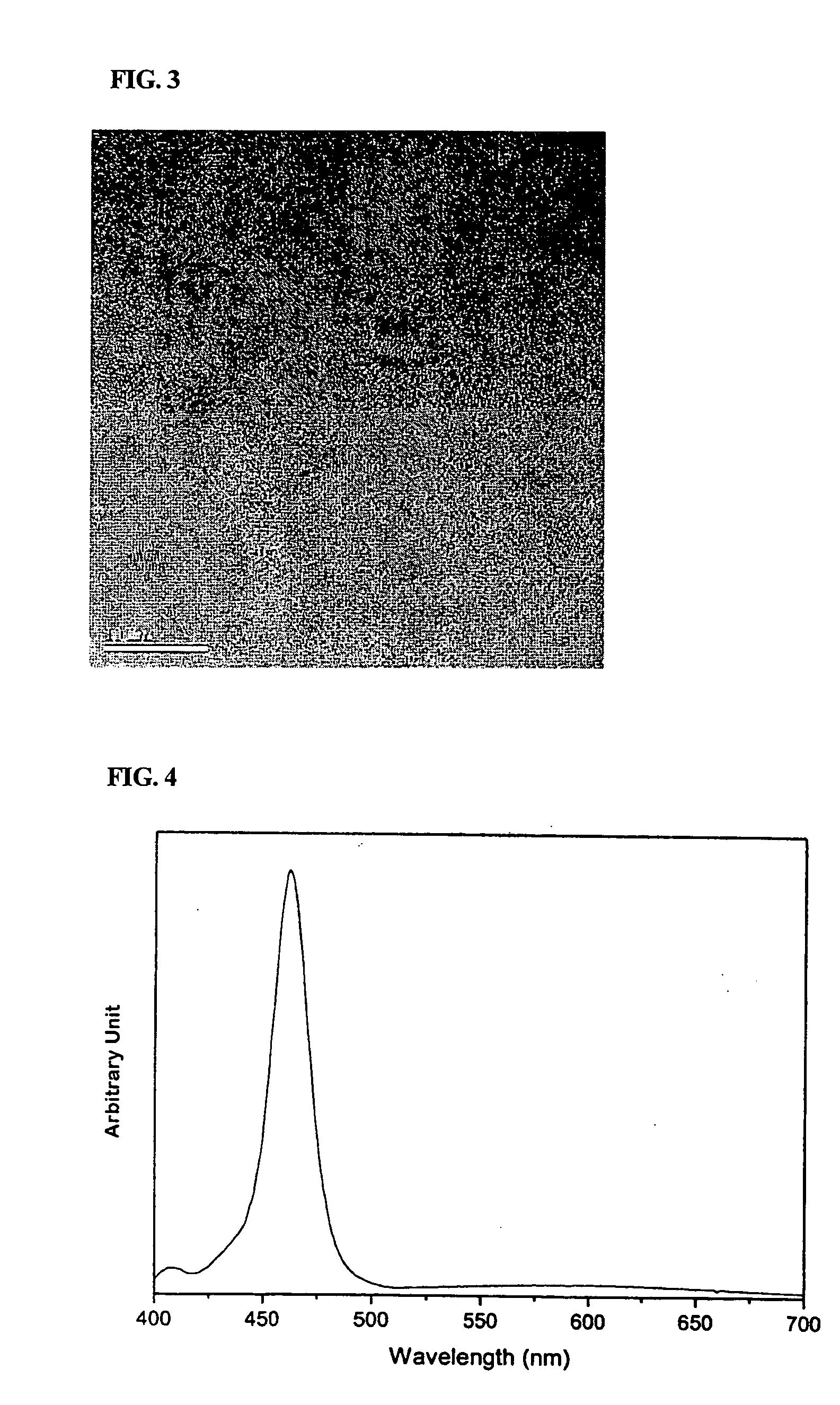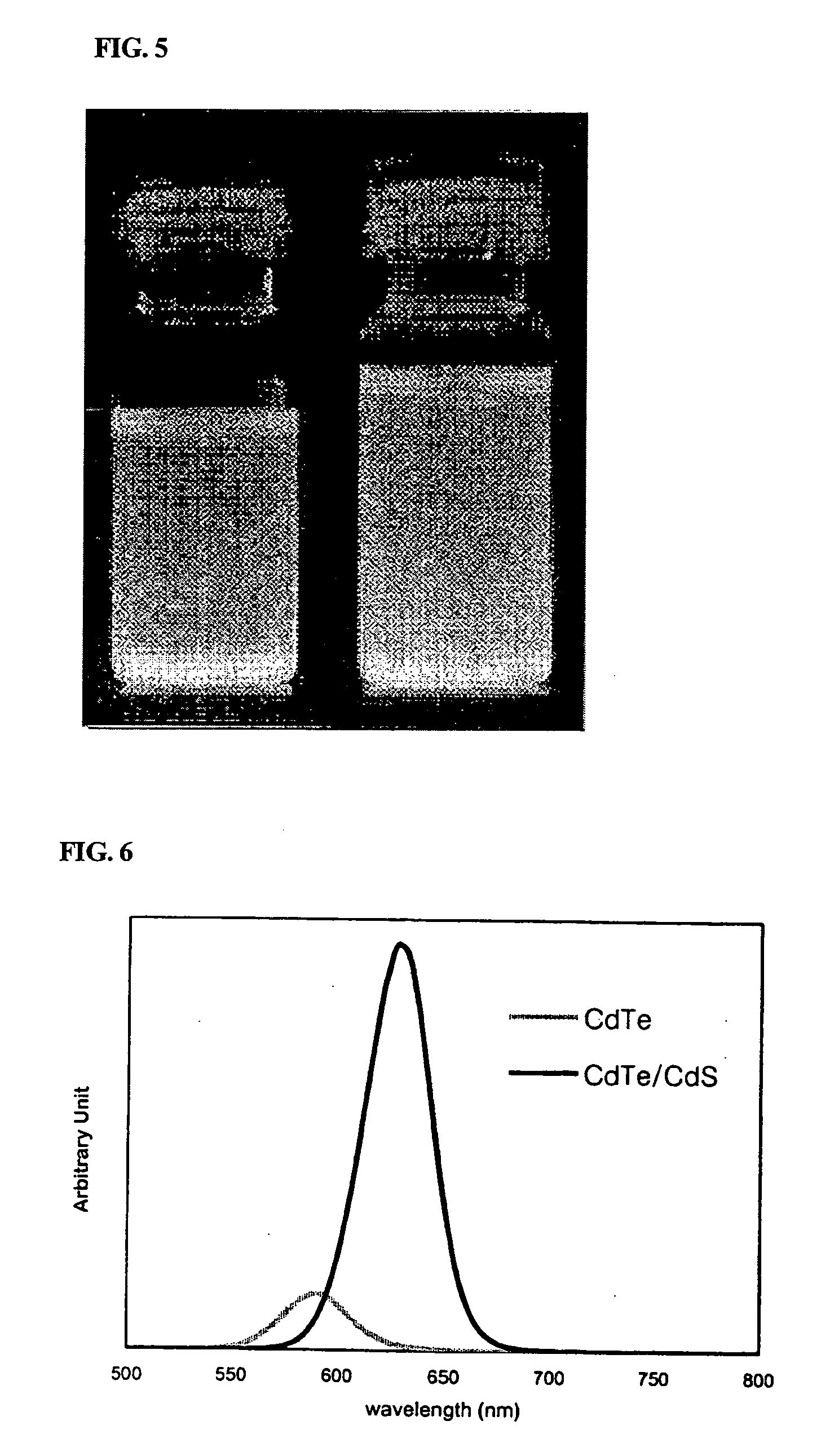Method for manufacturing metal sulfide nanocrystals using thiol compound as sulfur precursor
- Summary
- Abstract
- Description
- Claims
- Application Information
AI Technical Summary
Benefits of technology
Problems solved by technology
Method used
Image
Examples
example 1
Preparation of CdS Nanocrystals using Octadecane Thiol
[0059] 16 g of trioctyl amine (hereinafter, referred to as ‘TOA’), 0.5 g of oleic acid, and 0.4 mmol of cadmium oxide were charged simultaneously into a 125 ml flask equipped with a reflux condenser. The reaction temperature of the mixture was adjusted to 300° C. with stirring. Separately, about 0.05 g of octadecane thiol was dissolved in 1 ml of TOA to form a solution. The resulting solution was rapidly fed to the previous mixture, and then reacted for 10 minutes with stirring. Immediately after the reaction was completed, the reaction mixture was rapidly cooled to room temperature. Ethanol as a non-solvent was added to the cooled reaction mixture, and the resulting mixture was then centrifuged. The precipitates were separated by decanting the solution, and dispersed in 5 ml toluene to obtain a solution of CdS nanocrystals. A scanning transmission electron micrograph of the CdS nanocrystals is shown in FIG. 1. As shown in FIG. ...
example 2
Preparation of CdS Nanocrystals using Octane Thiol
[0060] 16 g of TOA, 0.5 g of oleic acid, and 0.4 mmol of cadmium oxide were charged simultaneously into a 125 ml flask equipped with a reflux condenser. The reaction temperature of the mixture was adjusted to 300° C. with stirring. Separately, about 0.015 g of octane thiol was dissolved in 1 ml of TOA to form a solution. The resulting solution was rapidly fed to the previous mixture, and then reacted for 40 minutes with stirring. Immediately after the reaction was completed, the reaction mixture was rapidly cooled to room temperature. Ethanol as a non-solvent was added to the cooled reaction mixture, and the resulting mixture was then centrifuged. The precipitates were separated by decanting the solution, and dispersed in 5 ml toluene to obtain a solution of CdS nanocrystals. An electron micrograph of the CdS nanocrystals is shown in FIG. 3. As shown in FIG. 3, the CdS nanocrystals have a zincblende structure. FIG. 4 is a photolumin...
example 3
Preparation of CdTe Nanocrystals and Formation of CdS Protective Layer
[0061] 16 g of TOA, 0.3 g of octadecyl phosphonic acid, 0.4 mmol of cadmium oxide, and 0.017 g of Te powder were charged simultaneously into a 125 ml flask equipped with a reflux condenser. The reaction temperature of the mixture was adjusted to 330° C. with stirring. After 1 mL of trioctyl phosphine (hereinafter, referred to as “TOP”) was rapidly added to the reaction mixture, the resulting reaction mixture was reacted for about 4 minutes. To a portion of the reaction mixture was slowly fed a solution of 0.04 g of octane thiol in 1 mL of TOA. The reaction mixture was allowed to stand at the same temperature for about 15 minutes. Immediately after the reaction was completed, the reaction mixture was rapidly cooled to room temperature. Ethanol as a non-solvent was added to the cooled reaction mixture, and the resulting mixture was then centrifuged. The precipitates were separated by decanting the solution, and dis...
PUM
| Property | Measurement | Unit |
|---|---|---|
| Reaction temperature | aaaaa | aaaaa |
| Reaction temperature | aaaaa | aaaaa |
| Structure | aaaaa | aaaaa |
Abstract
Description
Claims
Application Information
 Login to View More
Login to View More - R&D
- Intellectual Property
- Life Sciences
- Materials
- Tech Scout
- Unparalleled Data Quality
- Higher Quality Content
- 60% Fewer Hallucinations
Browse by: Latest US Patents, China's latest patents, Technical Efficacy Thesaurus, Application Domain, Technology Topic, Popular Technical Reports.
© 2025 PatSnap. All rights reserved.Legal|Privacy policy|Modern Slavery Act Transparency Statement|Sitemap|About US| Contact US: help@patsnap.com



